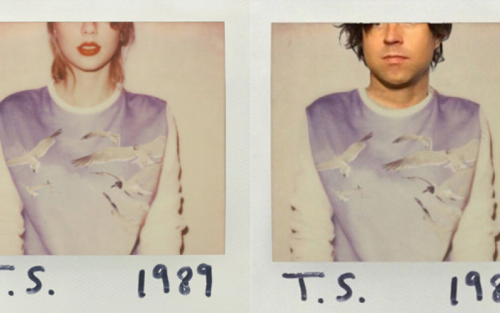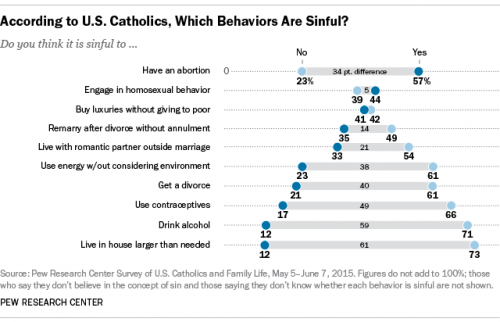This post is a collection of racially-themed parties and events at college campuses. They’re examples of one kind of simple individual racism that still perpetuates daily life.
———————————
April 2017: The Kappa Sigma fraternity held a “Mexican Appropriation Party” where students costumed as maids and laborers.
———————————
February 2016: Students held a “Mexican-themed” party with sombreros at Bowdoin College.
———————————
October 2015: University of Louisville President James Ramsey held a staff Halloween party where stereotypically Mexican sombreros, maracas, and bushy mustaches were handed out to guests. Latinos account for 3.4% of the college’s student population.
———————————
October 2015: Members of UCLA’s Sigma Phi Epsilon fraternity and Alpha Phi sorority threw a “Kanye Western” party. According to UCLA’s Afrikan American Newsmagazine, witnesses reported:
- “a group of women leaving the dormitory dressed in oversized shirts, gold chains, and form-fitting black dresses stuffed to caricature their butts.”
- a girl who had “taped a wine glass to her fake butt.”
- people “dressed in baggy clothing, bandanas, and gold chains.”
- “fraternity members [wearing] black face paint.”
When witnesses tried to take photographs, they reported being rushed by fraternity members, but some images appeared on social media.
———————————
March 2015: Sigma Alpha Epsilon members and others at the University of Oklahoma sing:
There will never be a nigger in SAE.
You can hang them from a tree, but they’ll never sign with me.
———————————
November 2014: “USA vs. Mexico” party hosted by the Kappa Alpha fraternity at Randolph-Macon College.
———————————
September 2014: Entries in a “car costume” event by ENSOC, the Engineering Society of the University of Canterbury, mock ebola victims, the violence in the Gaza strip, and the Taliban. Discussed here and the university’s official response can be read here (thanks to Mark B. and another anonymous tipster for the heads up).
Earlier that year, in May, the same group also put out a song parody featuring an actor in blackface. The negative response to this incident was swift, but it did not apparently make much impact on the group.
———————————
February 2014: Photos from an Olympics-themed mixer co-hosted by the Kappa Alpha Theta sorority and the Sigma Phi Epsilon fraternity at Columbia University, discussed here. Costumes and gags reflected racial/national stereotypes.
———————————
January 2014: The Tau Kappa Epsilon fraternity at Arizona State University hosted a so-called Martin Luther King, Jr party in which “mocked blacks by donning loose basketball jerseys, flashing gang signs and drinking from hollowed-out watermelons.” Photos online were tagged with #hood.
———————————
November 2013: The Phi Sigma Kappa fraternity at California Polytechnic – San Luis Obispo threw a “Colonial Bros and Nava-Hos” party.
———————————
October 2013: The Delta Kappa Epsilon sorority at the University of North Carolina, Chapel Hill, throws a 60s-themed party features “hippies” mixing with men in rice paddy hats. Faces blacked out. (Thanks to Holly for the link!)
———————————
July 2013: The Alpha Delta fraternity and Delta Delta Delta sorority at Dartmouth College hosted at “Bloods and Crips” party (story here).
———————————
June 2013: A “Cowboy and Indian”-themed graduation party thrown by a California State University, San Marcos student (via the California Indian Culture and Sovereignty Center). Ironically, the graduate majored in Anthropology.
———————————
April 2013: This still is from a video celebrating the spring semester induction of new recruits into UC Irvine’s Asian-American fraternity Lambda Theta Delta (via Colorlines). It features a fraternity member in blackface. The entire video can be seen here.
———————————
February 2013: Kappa Sigma Fraternity at Duke University throws an Asian-themed party. The invitation opened with “Herro Nice Duke Peopre!!”
———————————
February 2013: Three hockey fans in the audience of a North Dakota high school semifinal donned Ku Klux Klan-ish hoods as a “joke,” they later said.
———————————
October 2012: The photograph below depicts the members of the Chi Omega sorority at Penn State (source). It was taken during a Mexican fiesta-themed party around Halloween. The signs read: “will mow lawn for weed & beer” and “I don’t cut grass I smoke it.”
The Vice President of the college’s Mexican American Student Association, Cesar Sanchez Lopez, wrote:
The Mexican American Student Association is disappointed in the attire chosen by this sorority. It in no way represents our culture. Not only have they chosen to stereotype our culture with serapes and sombreros, but the insinuation about drug usage makes this image more offensive. Our country is plagued by a drug war that has led to the death of an estimated 50,000 people, which is nothing to be joked about.
The president of the sorority sent out an apology. Penalties are under discussion as of this posting.
———————————
May 2012: The University of Chicago’s Alpha Delta Phi fraternity required pledges to wear “Mexican labor outfits” and sombreros while mowing the frat house lawn to Mexican ranchera music (source).
———————————
March 2012: “Cowboys and Indians” party, University of Denver, hosted by the Lambda Chi Alpha fraternity and Delta Delta Delta sorority:
———————————
February 2010: Members of the Athletics Union at the London School of Economics painted their faces brown and “dressed up as Guantanamo Bay inmates and drunkenly yelled ‘Oh Allah’…” At least 12 students were found to have dressed up in costumes that were deemed “racist, religiously insensitive and demeaning.” Photos here and here.
———————————
October 2009: University of Toronto students decided to dress up like the Jamaican bobsled team from Cool Runnings for Halloween (source). Their costume, which earned them a “Costume of the Night” award at this college-sponsored party, included blackface.
———————————
February 2007: Pictures from a “South of the Border” party at Santa Clara University in California. Indeed, that IS a pregnant woman, cleaning ladies, and a slutty gang member.
———————————
January 2007: A party in “honor” of Martin Luther King Day at Tarleton State University in Texas:
———————————
January 2007: A party in “honor” of Martin Luther King Day at Clemson College in South Carolina.
———————————
January 2007: A party in “honor” of Martin Luther King Day at University of Connecticut School of Law.
———————————
May 2007: A Mexican-themed party at the University of Delaware (via Resist Racism).
———————————
2007: Students at Wilfrid Laurier University, celebrating Nations of the World, represented Jamaica by putting on blackface (via @LindaQuirke).
———————————
October 2001: A Delta Sigma Phi Halloween party at Auburn University (via).
Lisa Wade, PhD is an Associate Professor at Tulane University. She is the author of American Hookup, a book about college sexual culture; a textbook about gender; and a forthcoming introductory text: Terrible Magnificent Sociology. You can follow her on Twitter and Instagram.








